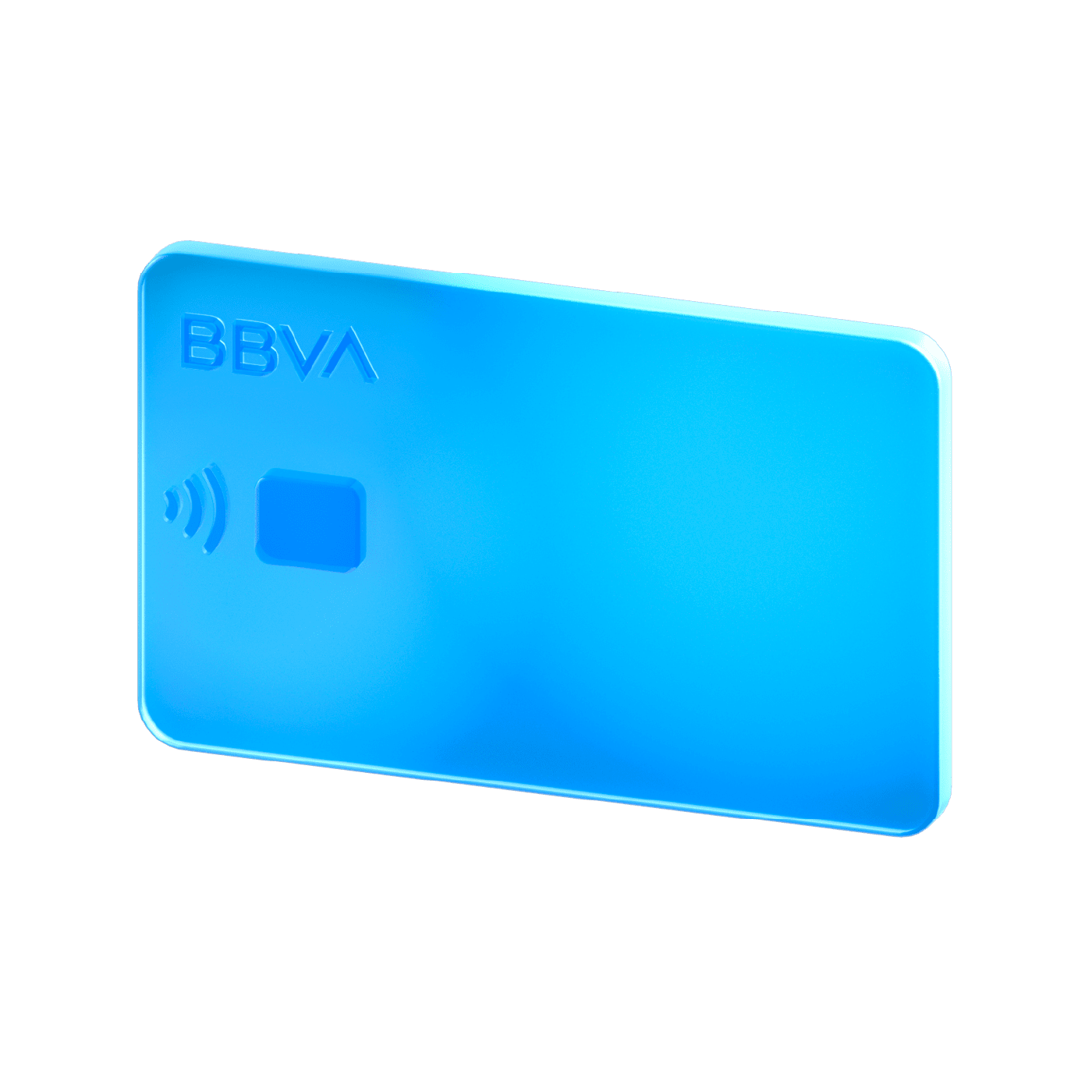Are you unsure which card is the right choice for you? In this article, we explain the differences between a credit card and a debit card, as well as other card types such as the girocard and prepaid cards.
Learn how each card works and what benefits it offers so that you can make the choice that best suits your needs.
What is a debit card?
With the debit card, you can only spend the money you have in your account. It is directly linked to your bank account and offers many benefits:
- Payments you make in stores or online are automatically debited in real time.
- The available amount corresponds to the current balance in your account.
- Withdrawing cash at an ATM is usually free of charge, except for when it's a machine provided by a third party, or done abroad.
- Debit cards from providers such as Visa or Mastercard are accepted worldwide.
The debit card is ideal for staying on top of your finances, as you can only access money that is in your account.
The BBVA debit card
With the BBVA debit card, you can take advantage of Mastercard's extensive ATM network to withdraw money worldwide – free of charge within Germany and within the Eurozone starting at EUR 150. You can also withdraw money at around 12,000 participating retail partners.
In Spain you can withdraw money at approximately 4,500 BBVA ATMs, free of charge and with no minimum amount. In addition, you can take advantage of exclusive offers and benefits, like 3% cashback during the first 6 months.
Maximum security with your free BBVA debit card
What is a credit card?
In contrast to a debit card, a traditional credit card enables you to pay even if the balance in your account is insufficient. The purchases are later debited from you account, usually at the end of the month. This way you can borrow money from the bank and pay it back later.
- The credit limit is based on your income.
- Ideal for financing larger purchases.
- It's possible to withdraw cash, but it often involves fees.
- Often required as a security measure for hotel bookings or rental car reservations.
- Accepted worldwide, especially by providers such as Mastercard and Visa.
The main difference between a debit card and a credit card is the method of payment: When paying by debit card, the amount is debited directly from the current account, while with the credit card you can have access to a credit limit that will be settled at a later date.
What debit and credit cards have in common
Debit and credit cards have many similarities that make them convenient payment methods. Both card types allow contactless payment and mobile payment. In addition to physical cards, there are also digital cards, which are specifically designed for online purchases.
Internet payments require the cardholder name, the card number and the CVV code. Together with online banking, they let you track your transactions at any time.
Prepaid cards and prepaid credit cards
Girocard
The girocard was introduced in 2007 by the Central Credit Committee (ZKA) as a replacement for the traditional EC card issued by German banks. This change was especially necessary for adapting the German payment card to international standards and for meeting the requirements brought about by the increasing digitalization of payment transactions. The girocard is a type of debit card, as it is used to debit payments directly from the linked bank account.
- The girocard mainly works in Germany, as it is geared toward the German banking system and payment infrastructure.
- It enables cash withdrawals and payments in Germany and is linked to a German bank account.
- In comparison to other cards, such as Visa or Mastercard, its functionality abroad is limited.
- If a girocard has the Mastercard or Visa logo, it can be used for payments in countries where these systems are accepted. However, their acceptance is also limited here in Germany in comparison with international credit cards.



